Aesthetics of Kronis
Preface | Read First
Treat this document as a meta description that will heavily reference real-world cultures and designs - including images - to assist in painting a picture of Kronis in your mind. Key descriptive words are bolded to allow you to skim these sections if you are, understandably, not keen on reading everything. The following sections are organized by the geographic subcontinents of Kronis with sections for each culture listed alphabetically. Cultures will have 3 to 5 areas of emphasis that vary by culture.
Note: real-world terms, while oddly specific at times, should be easily searchable online with a copy & paste.
Table of Contents (based on the regions map below):
The Western Gateway
Subcontinent of Hersinos
The Great Rhalan Coast & Salkan Fjords
Subcontinent of Ismia
Subcontinent of Lukon & the Aetian Peninsula
Kos-Rillan Region
Valley of the Conquerors
Parsia
Lammetrian Coast
Island of Moros
Island of Tongiu
Podrusan Valleys
Dresnid Desert
The Western Gateway
KNORI
The Knori are a very trade and strategy-oriented culture owing to influences by the ancient Phoenicians and medieval Venetians. The Knori color scheme is that of navy blue, maroon, olive green, gold or golden orange, black, and pearl white.
ClothingKnori clothing reflects their wealth, with even the commoners wearing flowing robes and tunics accented with geometric embroidery or subtle patterns denoting the status of their family or profession. Fine linens and furs are accessable across all Knori society, with the wealthier merchants and aristocrats wearing almost exclusively silk. Jewelry made of amber, lapis, and pearl complementing ornamental sashes, belts, cloaks, and brooches are favorites among Knori society. Elaborate rings with family crests also trace their origins to the Knori.
ArchitectureThe Knori are known for their harbor cities, protected by watchtowers with sea walls and featuring sprawling docks, stone warehouses, and markets buzzing with activity. Cities and towns along rivers also tend to have intricate canal networks with stone walkways and many houses and shops opening directly onto the water. The Knori host famous guildhalls for their merchant class - the largest class of people - complete with marble courtyards, carved wooden interiors, and stained glass windows depicting myths or family histories. Hidden compartments and escape tunnels are common here for some reason.
Navy and MaritimeThe Knori’s seafaring heritage is central to their identity, with early vessels resembling Phoenician galleys and evolving into the dominant Venetian Mediterranean Galleys. Merchant ships are often painted in a signature dark blue or black, with gold trim and intricate figureheads depicting mythical creatures or family symbols.
Subcontinent of Hersinos
SLINTANS
The Slintans take inspiration from the Ancient Bactrian and Indo-Hellenic Kingdoms and the cultures of the Khmer, Malay, and Phoenicians.
Clothing & JewelrySlintan clothing consists of robes, sarongs, and tunics in greens, turquoise, gold, and crimson. The Slintans place great emphasis on the craft and adornment of their jewelry in both men and women. They wear unique variants of layered necklaces, bracelets, and earrings from precious gems and metals of the Treshin Mountains, mainly consisting of gold, silver, jade, and agate. Slintans also incorporate a great deal of shell and coral as embellishments, complemented with pearls, ruby, topaz, and sapphires which symbolize wealth and divine favor.
ArchitectureSlintan architecture has all the grandeur of South and Southeast Asian design, complete with tiered structures with highly-intricate carvings along with columns and porticos. Slintan homes are built of rectangular layouts with inner courtyards and Mediterranean-tiled roofs. Cliffside temples and sea-facing sanctuaries feature amphitheaters for rituals and celebrations, where priests perform chants and dances to honor the Gods.
ShipbuildingSlintan vessels consist of sleek and agile Biremes and Triremes that evolved into galleys resembling Mendam Berahi and Sampan Panjang ships. Their vessels were typically adorned with carvings of sea gods and mythical creatures and had painted hulls. The Slintans also build ships for sacred and ceremonial purposes. They are often found docked near temples, used exclusively for offerings to the Gods or maritime festivals involving floating lanterns, processions of elaborately decorated ships, and ceremonial water dances.
The Great Rhalan Coast & Salkan Fjords
RHALANS
Rhalans occupy large swathes of territory which contain varying mixes of Ruthenian, Kievan Rus, Polish-Lithuanian, and Novgorod-based cultures.
ClothingRhalan clothes consist of heavy wool, fur, and leather to withstand their harsher climates. Embroidery in red, gold, and dark purple adds splashes of color and higher-status individuals wear cloaks fastened with ornate brooches along with headdresses with metallic embellishments. Flowers arranged in wreaths and garlands are also popular as both accessories and home decor, especially for festivals and celebrations.
ArchitectureThe Rhalans are known to construct great halls and temples made of robust timber and stone foundations with steep conical or flat-pitched roofs. The Rhalans later perfected golden and copper-plated domes and spires that decorated its palaces. Aside from the few major cities dotting Rhalan lands, there are villages and fortress-towns fortified with palisades or low, tiered stone walls, with housing built equally from logs and stone with thatched or timber roofs. Colorful murals depicting Rhalan legends and gods decorate key public spaces.
NavyThe Rhalans are as prideful of their shipbuilding craft as the Salkans and Slintans. Rhalan longships are sturdy and sleek in design, with motifs of the local deity or clan patron god. Those who are unfortunate enough to live near Rhalans know their dreaded sails when they see them: richly dyed with bold patterns and religious symbols, often featuring depictions of the sun, stars, or stylized animals.
SALKANS
The Salkans are your penultimate Nordic culture, associated with the typical fur cloaks, longhouses, and longboats characteristic of the Viking-age Danes, Norwegians, and Swedes. Salkan colors tend to be shades of blue, grey, dark green, and red.
Mining & SmithingSalkan smiths rank among the best in all of Kronis, due to the culture's rich access to minerals. Engraved swords, axes, and spears are commonplace, and are notoriously stronger and sharper than other standard weaponry. As a result, Salkan mining communities tend to be fortresses with layers of stone and palisade walls.
Clothing & ArmorSalkans wear thick woolen tunics, fur-lined cloaks, and leather boots, often with embroidery along cuffs and hems depicting waves, runes, or battle scenes. The Salkans heavily favor chainmail and gambeson combinations, with specially-crafted steel helmets with decorated face-masks, goggles, or nasal guards protecting the face. Salkan shields tend to be round and are the primary item of their wardrobe depicting their clan or family. Salkan soldiers are also likely to wear jewelry to combat, such as torcs, arm rings, and pendants crafted from silver, iron, or bronze.
Navy & MaritimeThe Salkans were the progenitors of the effective longboats and knorrs, which they also managed to line the hulls with steel. Salkan ships also tend to have carved figureheads of creatures or spiritual protectors from their religion. Masts will contain square or lanteen sails that will have the clan crest or symbol painted on it.
Subcontinent of Ismia
ISMATIANS
The Ismatians, or Ismians, are inspired by the Frankish tribes that shared more in common with other Germans as well as Romano-Gallic peoples.
ClothingIsmians are known for their intricate embroidery, including geometric and religious motifs in functional yet elegant designs. Common fabrics like wool and linen are accented with leather and fur for durability and warmth, while rare dyes and metallic threads denote status among the nobility. Clothing often serves as a visual narrative, with patterns and symbols revealing an individual’s homeland, profession, or social rank. Ismians predominantly wear hues of blue and red complemented by either dark or light green or grey.
ArchitectureIsmian architecture is closer to early Western European buildings, with thatch roofs and whitewashed clay & wooden walls. Stone is preserved for temples, basilicas, and other holy sites among the varied religions across Ismia.
ArmorIsmian armor is founded in its warlike legacy, and has recently taken more inspiration from Morosian and Aetian invaders. Their helmets resemble all kinds of spangenhelms, and some varieties appear like a spangenhelm crossed with a Corinthian helmet. They use chainmail widely, complemented by leather or cloth.
KHOLAMS AND AILESIANS
The Kholams are based on the early Germanic and West Slavic peoples while the Ailesians are an offshoot culture that evolved almost directly from them, with additional influences from the Nordic Salkans resulting in taking more inspiration from the French and Norman cultures.
TraditionThe Kholams and Ailesians both greatly value the traditions that define the history of their identities. Holy and secular festivals, including feasts, hunts, and harvests along with songs, dancing, and general merriment are commonplace in both societies. The Ailesians also introduced the concept a jousting tournament as well as military parades to show their dominance and lasting legacy.
ArchitectureKholamic and Ailesian architecture is diverse as a result of its many climates and biomes that the culture inhabits - ranging from swamps to vast woodlands to the mountains of the Salkan Scape. Kholamic buildings in swamplands tend to be built on stilts with bridges and elevated pathways connecting entire villages and towns. Buildings in the dense forests resemble norse longhouses with classic thatched roofs. Ailesian and Kholamic architecture in the more mountainous areas rely on stoneworks, with watch-towers and earthen-backed walls protecting cities of stone and wood. The Ailesians especially have been fans of building tiered battlements in regions with more rugged terrain.
Alchemy and MedicineBoth cultures are known for their connection shared with nature and the craftsmanship that resulted from it, including healing arts and alchemy. The Kholamic peoples had healers evoking a similar image to plague and witch doctors known for their ability to divine lifesaving salves and potions from plants and minerals of the environment. The Ailesians took these 'arts' a step further with the inventions of several strains of poison and other hazardous chemical substances.
Clothing & ArmorKholamic and Ailesian clothes are rather plain, dominated by single-color woolen tunics of blue, brown, green, and grey. However, royalty in both Kholamic and Ailesian society know how to be stylish, with embroidered cloaks and robes decorated with motifs of leaves or animals. These higher-end clothing typically have vibrant blue, gold, or red trims. The armor of Kholams and Ailesian are equally as simple and effective as their common clothes, with a heavy reliance on chainmail complemented by gambesons and surcoats. Both cultures tend to have a range of simple open-faced helms. Ailesians also place an importance on horse barding, with chainmail and folded plating in a variety of coverage methods.
Subcontinent of Lukon & the Aetian Peninsula
AETIANS
The Aetians are likened to the Ancient Greeks, Assyrians, and Phoenicians.
CuisineThe Aetians are known for their bread, from flatbreads to flakey loafs, they are masters of this craft. They mass-produce bread through great stone ovens, with different layers denoting different heats and meant for different types of bread. Fruits like cantaloupe, strawberry, dates, and pomegranate also dominate the countryside.
ArchitectureAetian architecture loves columns, not only for temples, but houses as well. Gardens are frequently found around houses both within cities and in rural areas. Marble and stone comprise most of Aetian buildings and fortifications, built in Hellenic and Mediterranean styles.
Clothing & ArmorTheir primary worn colors are vibrant greens, yellows, and blues paired with white. The Aetian-cultured Seleutine Empire later added purple as a color of royalty. Aetian clothes are modest as various tunics and the occasional toga among higher status denizens, made of wool and linen.
The Aetian armor is a combination of chainmail together with variations of linen Lino-thorax over the top or even sewn in. Their helmets also reflect combinations of ancient Attic, Boeotian, Chalcidian, and Corinthian styles.
NavyTheir ships looks similar to the Triremes and Biremes that were used to cross the Mediterranean, with similar ram, rowing, and sail mechanisms. Later evolutions of the Aetian ships followed the paths of the Alexians, detailed below.
ALEXIANS
The Alexians are derived from the Greek/Phoenician-based Aetians and Roman-based Morosians, merging together in similar fashion to the Byzantine Romans.
CuisineAlexian cuisine is a direct continuation of the Aetian bread and fruit diet, with a far greater emphasis on meats, such as cow, chicken, hare, and lamb. Salads incorporating fruit, bread, and meat are a popular choice, as well as something resembling kebabs.
ArchitectureAlexian architecture is a direct continuation of Aetian architecture with even more fanciful columns, spacious courtyards, and tiered city-planning. Alexian and Aetian culture also improved on their walled fortifications later in the ages, making them another space for both art and improved defense - the crown city of Alexia is famous for its thick walls with gilded lapis designs.
Clothing & ArmorAlexian clothing colors dropped the Aetian green, leaning more on vibrant blue, cyan, yellow, and red. Like the Morosians and Aetians, Alexian wardrobes comprise elaborate togas and tunics as well as an immaculate use of full capes and shoulder capes.
Alexian armor is primarily chain or scale mail for every soldier, with heavy decoration for more elite regiments. Variations of the Roman Spangenhelm as well as helms with full chain or scale aventails veiling the face came to dominate Alexian armor in later centuries.
NavyEarly Alexian ships were dominated by Trireme designs and evolved into Mediterranean galleys such as Dromons and Venetian Galleys with gradual improvements and modifications, such as adding boarding ladders, lateen sails, and a full space deck instead of above-deck rowers. Alexians also invented Alexian Nightfire, a concoction of acidic fire that burns even while submerged in water (not just on top!) and employed on Alexian ships in form of a primitive grenades or the dragon's breath hose located off the bow. Alexian Nightfire is of course heavily inspired by Greek Fire.
POSCAEANS
The Poscaean aesthetic is influenced by the styles of Ancient Persia and Mesopotamia.
CuisinePoscaean cuisine is dominated by bread similar to the Aetians, though the Poscaeans take different approaches, involving varieties of different grains. Some methods of baking involve "the fire circle" where the flames are actively circulating above the dough within a dome-shaped kiln or oven. The Poscaeans are also some of the first to invent alcohol, and thus many varieties of ale, beer, mead, and cider are produced across the vast lands Poscaeans inhabit.
ArchitectureFocal points of Poscaean culture is their architecture consisted of fire-blasted clay and sandstone materials, shaped artistically and in large dominant structures. Every Poscaean city has at least one Jeme-brzgu (Jem-ay-berz-goo), "A great house" where dozens or even hundreds of families may live within. Poscaean cities are known for their skylines dotted by multiple colossal structures of Jeme-brzgu, temples, and palaces
Clothing & ArmorTheir primary worn colors are orange and white, and to a lesser extent of green and red. These are commonly represented in kaftans, kandys, robes, and other decorative garments. Poscaean armor varies widely as crafting and smithing practices across the Poscaean regions differ between chainmail, linen, bronze, or scale. The primary consistency among Poscaeans is their use of armored masks (similar to the Cumans) as well as chainmail veils as their headgear. Poscaeans also famously carry a versatile range of weapons into combat. Poscaean infantry frequently perform as both archers and spearmen or swordsmen.
Kos-Rillan Region
GHISKANS
The Ghiskans resemble the deep-water trading states of the Portuguese, Dutch, and Hanseatic league, as well as exert an influence similar to the Mediterranean prowess of the Venetians. Ghiskan worn colors tend to be darker greens, blues, and beige.
NavyThe Ghiskans developed new types ships inspired by cultures from the interior seas of Kronis. Their ships bear resemblance to the longboat, cog, and hulk, but are more elongated and may have multiple decks or rows of oars.
ArchitectureThe Ghiskans are a wide and far-reaching culture, and their primary hallmark is all the towers they leave behind. Towers may be spotted along the roads, in dense forests, and all over their cities to serve multiple purposes. These towers are both square and round, ranging from the size of minarets to castle keeps.
IANANOSIANS
The Iananosians are one of the original native cultures that have preserved their traditions. Inspiration pulls from the Ancient Iberians and Celts, as well as styles similar to the Carthaginians. As a culture with heavy druidic elements, their primary worn colors are vibrant greens, browns, and silvers.
HerbalismIananosians craft heavily with herbs, making apothecaries and incense common in their cities and towns.
ArchitectureThe Iananosians are known for their elaborate and vast gardens incorporated with their buildings. The center of the current capital of Cana resembles the Hanging Gardens of Babylon throughout its entire city, second only to the old crown capital of Cheras.
ArmorIananosian armor and the typical soldier in general resembled the Iberian Caetrati soldier, wearing either lino-thorax, hide, or the signature cardiophylax armor. One major difference is the lack of metal on most Iananosian armor due to the humidity of their environment, instead replaced by linen, leather, or wood.
RILLANAI
The Rillanai have the vibes of the Quechua and Incans, but also from expansionist Ancient Persian styles, reflecting their influence by the Neo-Poscaeans. Rillanai clothing primarily comes in the warm hues of orange, yellow, and accented by browns.
ArchitectureRillanai architecture features massive stone structures featuring perfectly fitted blocks, trapezoidal doors, and intricate carvings. Central to their cities are qanomak, towering pyramid-like structures with stepped terraces crowned by golden idols or blazing fires. Urban areas showcase a mix of columned palaces with ornately carved pillars and building with lighter materials like bamboo and adobe, adorned with vibrant murals in warm hues.
JewelryRillanai make use of circlets and bands made not only of precious gems of gold, jade, and topaz, but also clay, rock, and wood.
ArmorThe Rillanai use of armors differs depending on the region of their Empire, given the unique scattered tropic jungles to their south and east. When not in these more humid areas, the Rillanai incorporate the use of armored masks and helms from the Poscaeans. Their chainmail resembles its use by the Persian Sassanians. Armor in the more humid and tropical regions avoids metals, similar to the Iananosians, instead being made up of leather, linen, hide, and wood in the similar styles to their metal armor.
Valley of the Conquerors
AOMEKIONI
The Aomekioni, or Aomeki, are inspired by the ancient warrior cultures of Assyria, Sparta, and Thebes. In Kronis, they are a further culmination of Aetian, Poscaean, Iananosian, and Srian cultures.
CuisineAomekioni food is perhaps among the most diverse among the entire region. They combine the proficiencies of Aetian and Poscaean bread along with the greens and vegetables of the Iananosians and the spices from their own region and the Srians. Overall, Aomekioni food can come in virtually any variety, with any amount of meat, bread, seafood, and vegetables.
ArchitectureThe Aomekioni build in a practical fashion, with plain-looking but highly functional structures. Their architecture is highly influenced by the other cultures of Kronis that melded together in these regions. Their cities followed a tiered style, comprised of flat and wide palaces and temples. Native Aomeki buildings are rarely more than one story tall.
Clothing & ArmorThe primary color scheme of the Aomekioni is green and black. Like the Aetians and Poscaeans, Aomekioni clothes consist of tunic, robes, kaftans, and toga variants.
Aomekioni armor is usually comprised of solid bronze breastplates and variations of Corinthian helms. Their favored weapon is the pike, complemented by unique swords that resemble a longer and balanced Kopis.
MORADI
The Moradi are the ultimate melting pot of melting pot cultures. They primarily represent the blending of Mongol Turkic and Roman influences reflecting their existence at the congruence of the Morosian Empire and the invading Dresnids. To a lesser degree the Moradi are also influenced by Hungarian, Egyptian, Greek, and Arab Levantine cultures owing to further blending between Srians, Zuremi Ghiskans, and Lammetrians.
CalligraphyFor the Moradi, the written word is a revered art form, celebrated in both public and private life. Scribes, known as Kalam-Masters, dedicate their lives to crafting texts, whether religious, philosophical, or poetic. The Moradi culture places higher importance on libraries - often commissioned by rich families - serving as the main public spaces and housing a range of scrolls and tomes. Moradi palaces and squares also tend to feature carved or painted inscriptions of verses, historical records, or teachings, blending aesthetics with education.
CuisineMoradi cuisine is rich and diverse, featuring spiced meats, savory pastries, and aromatic stews. Flatbreads, stuffed dumplings, and rice dishes are staples, paired with herbs, nuts, and dried fruits. Festivals are celebrated with lavish feasts, where whole roasted animals, layered cakes, and sweet syrups are shared among the community. Large communal ovens and open fire pits become the heart of festivities, and every dish tells a story of tradition and joy. Tea and honeyed drinks are often served at the end of meals.
Clothing & ArmorMoradi clothing blends luxury and functionality, with layered capes, robes, trousers, and tunics in vibrant shades of blue, gold, red. The Moradi also craft with a range of fabric material, including silk, wool, and leather. Moradi armor mixes designs of lamellar and chainmail from both the Dresnids and Morosians, with more elite soldiers donning plumed helmets, fur-lined cloaks, and ornate chestplates.
SRIANS
The Srians are heavily inspired by Egypt and the Ancient Levant, from both Bronze-age as well as Hellenistic periods. The Srians had greater access to purple than the Aetians, making it a more common color for them to wear. Srian colors are also of vibrant blue, pink, and white.
ArchitectureSrian architecture is like that of Aetian and Poscaean, with their primary emphasis on grand temples that dominate all Srian city skylines. City and castle walls are just as elaborately built as the Alexians'. The Srians also frequently build low-lying but elaborate amphitheaters and agoras that serve as main congregation areas for a very social people.
JewelryUnlike many surrounding cultures, the Srians took mainly to jewelry over other forms of art. Among their purple, blue, and white robes Srians may sport ruby, gold, lapis, sapphire, emerald, and diamond circlets, chokers, arm bands, or leg braces.
NavyThe Srians were among the first to perfect warship design, building vessels like Triremes that were able to traverse up rivers as well as open ocean. These vessels resembled a mix somewhere between Ancient Egyptian warships and the Roman Liburnian.
Parsia
BALANS
The Balan style takes influence from the early Celts and Iberians of Europe, as well as cultural customs of the Mayans.
AthleticsThe Balans place a great social emphasis on physical fitness which has resulted in many athletic activities including stone courts not too unlike the Mesoamerican Ballgame. Thin and breathable clothing also found its beginning in Balan territory.
JewelryBalan jewelry is made from painted wood, compact linen, and various metals - including jade, diamond, and gold.
Clothes & ArmorThe Balans had the greatest access to Lavender and aquatic snails, which resulted in purple dominating their wardrobes. The Balans also dress in yellows and browns, along with greens later in history. The Balan wardrobe is often a patchwork of leather, linen, and hide material crafted into assorted fashions.
Among the various ways to improve physical fitness is smithing, which has resulted in a large national outputs of bronze (later iron and steel) breastplates - but not as many helmets or other armors. Ironically, many Balans refuse to wear any armor at all for combat.
VENDALIANS
The Vendalians are directly descended from the Balans and evolved with a more 'civilized' aesthetic, taking incluences from the Anatolian Celtics and Romans due to their alliance with the Morosians.
Social Customs & ArtVendalians place great social emphasis on fitness and adaptability, with a strong cultural embrace of intercultural interaction. Vendalians take from their Balan roots in athletic traditions such as competitive games in their large stonework public spaces. Vendalians also have a deep appreciation for oral traditions and music, with influences from neighboring Morosians.
ArchitectureMost Vendalian buildings have thatched or clay-tiled roofs depending on climate. Common Vendalian buildings consist of Roundhouses built from stone and wood, as well as large stone forums and amphitheaters influenced by the Morosians. Vendalian stonework also often sport spirals and knotwork similar to Celtic motifs.
Clothing & ArmorVendalian clothing comes in colors similar to Balans, with a dominance of earthly tones such as orange, yellow, and brown accented by vibrant Celtic-inspired patterns. Accessories include belts, brooches, and torcs (neck rings), showing off wealth and craftsmanship.
Armor includes bronze breastplates and scale armor, often adorned with Celtic engravings. Helmets might resemble Roman galea helmets but with added decorative crests or plumed accents.
TREBISOZI
The Trebisozi are a culmination of the Armenians, Circassians, Georgians, and Ancient Pontus, mostly owed to being derived from the ancient Parsan culture. They also take minor influences from the Egyptian and Levantine cultures brought by the Srians and Srian derived peoples - including the ancient Amnus and Thernan cultures.
ArchitectureTrebisozi architecture blends monumental grandeur with intricate artistry, with tiered fortifications, vast open courtyards, and intricate agora market squares. Many Trebisozi buildings incorporate arched windows, carved facades, and ornate domes, often adorned with geometric and floral patterns. Monuments and sculptures that are cut from cliffside rocks or stand as marble atop hills dot Trebisozi cities and countryside alike. These monuments serve as shrines and holy sites for reverence of the warriors of Trebizosi, a caste that their society hold in the highest regard.
Symbolism & InsigniasTrebisozi culture is steeped in symbolism reflecting their values of military honor and odd sense of spirituality, with shields, carved insignias, and banners decorated with the motifs of lions, phoenixes, spears, swords, and mountain peaks. Art and jewelry also feature these motifs in addition to more peacetime symbols of grapevines, scrolls, and doves.
Clothing & ArmorTrebisozi oft wear shades of blue, particularly cyan and grey, with secondary colors of brown, gold, orange, and tan. The Trebisozi balance opulence with functionality in their wardrobe with layered capes, fur-lined coats, robes, and tunics - ranging in embroidery and taste depending on one's class. Trebisozi armor is chiefly made of the typical lamellar and scale mail with helmets adorned with chain aventails that often veil the face. Trebisozi also take pride in the designs of their shields, with large round shields resembling hoplons that are often engraved or decorated with cultural designs as detailed above.
Lammetrian Coast
LAMMETRIANS
The Lammetrians are a style entirely unto themselves, with some slight inspiration from Assyrians, Spartans, Ancient Persians and Ancient Medians. Not all Lammetrians are religious, but their dualistic religion with Anri the God of Peace and Akros the God of Wrath pervade many aspects of their design and style. Highly recommended to check out the Lammetrians cultural article for a further grasp on these peoples.
ReligionLammetria's syncretic religion shapes many aspects of life, where worshipping the deities Anri and Akros are displayed through a variety of rituals. Worship of Anri is shown through gift giving and the exchange of flowers, where specific colors convey unspoken messages. Worship of Akros consists of ritual combat (typially non-lethal) and other martial displays to demonstrate prowess to honor the god. An especially devoted Lammetrian maintains a small shrine in their home, decorated with flowers, symbolic tools (such as a plow for Anri or a sword for Akros), and dual-colored candles.
ArchitectureLammetrians emulate the marbled architecture of the Greeks, found in Athens and among holy sites. These places are notably different, however, with motifs of peace or war, as well as the incorporation of planted flowers. Homes are modest but reflect the importance of balance, often including courtyards or small gardens for reflection. Green and red tiles are used to signify familial devotion to Anri, Akros, or both. Columned temples and shrines to Anri, Akros, or both are common amongst Lammetrian cities and towns. Holy sites of Anri tend be serene places filled with gardens and flowing water, designed to inspire reflection and tranquility. Sites of Akros tend to be imposing structures of stone and bronze, with tall, angular designs and walls adorned with battle reliefs and depictions of warriors. Flame braziers light the interiors, creating a dramatic and reverent atmosphere. Military structures, such as fortresses and watchtowers, emphasize defensive strength, with thick walls and ornate carvings celebrating their martial history. Some fortresses include hidden gardens within their walls, symbolizing the enduring presence of peace amidst war.
Clothing & ArmorCommon Lammetrian attire consists of tunics and robes in vibrant tones of green, lilac, and white. Those who are of the military class also wear clothes of red or with red accents. For ceremonial occasions, Lammetrians wear garments adorned with intricate floral embroidery or woven patterns symbolizing harmony. Lammetrian soldiers wear laminated bronze or steel breastplates embossed with depictions of Anri and Akros. Illyrian or Corinthian-style Helmets with crests resembling flames are also common. Jewelry, such as armbands, necklaces, and brooches, is crafted from copper, gold, and lapis, incorporating symbols like branches, flowers, or flames. These items convey personal devotion to either Anri or Akros—or both.
Island of Moros
MOROSIANS
The Morosians take a lot of inspiration from the Romans in all of their forms, from kingdom to republic to empire, and even the late empire and Byzantine era. They also have details incorporated from the Ancient Greeks, the Teutonic Order, and the late colonial empires of the British and Dutch. Similarly, the Eutotans and Taichians are wrapped in the aesthetics of the Romans, themselves being inspired by Ancient Latin cultures like the Samnites and Etruscans.
CuisineFor the Morosians on their mainland, wheat, olives, and grapes form the basis of most meals - used to produce bread, olive oil, and wine. Fruits such as figs, pomegranates, and dates are staples, often imported from conquered lands. Additionally, access to immense trade routes allowed for a wide variety of spices and ingredients, such as cinnamon, cumin, and saffron, giving Morosian dishes a rich and diverse flavor profile. Festivals feature grand feasts with roasted meats, stuffed pastries, and spiced stews, often served with a variety of cheeses and honeyed desserts. Banquets also include performances, games, and competitions to entertain guests.
ArchitectureMorosian architecture embodies their imperial grandeur, with magnificent temples, agoras, marketplaces, amphitheaters, baths, and arenas dotting their cities. At each of these places, you can find decorations in the form of open courtyards with flowing gardens and marble statues as well as colonnades. Within Morosian palaces and public spaces are tile mosaics depicting scenes of conquest, divine figures, and celestial motifs. Civilian homes in core Morosian territories tend to consist of Roman-style domus and insulae, sometimes with atriums, fountains, or entire terrariums comprising their interior courtyard. The Morosians also built sporadic fortifications all throughout their territory to defend both chokepoints and population centers, and consist of robust square-style layered fortifications and watchtowers. City gates built or refurbished by Morosians tend to feature reliefs of Morosian victories and local gods.
Clothing & ArmorCommon Morosian clothing consist of tunics made from linen or wool, often dyed in white, red, or navy blue, with accents of gold and black worn by those of higher status. Aristocratic vestments, consisting of gold-trimmed robes, also tended to feature motifs of the sun and stars as well as phoenixes or eagles and laurels. Morosian armor comprises chainmail and some lamellar, with segmentata-style plate armor favored among the elite and the individuals or armies who can afford it. The Morosians introduced the concept of military ranks via embossed sigils on pauldrons or helmets. By default, Morosians would wear a simple open-face helmet with a small nose-guard and crest or plume. As their empire expanded, Morosian helmets became mixed and varied by region, with Corinthian and Attic style helmets in the east, Romano-Gaelic styles in the north, and Tolga and styles utilizing a full chain aventail across the face in the south.
Navy & MaritimeThe Morosians adopted naval prowess from a combination of occupied Aetian, Srian, and Lammetrian territory which resulted in mighty ships like triremes, quadriremes, and quinqueremes fitted with bronze rams and reinforced hulls. The Morosians also place great emphasis on trade, with large mechant vessels fitted for ample cargo on long journeys. Ships paid for by wealthier patrons would even include mosaics and carvings along their bow reflecting the former Morosian Empire's wealth. The Morosians were also the first to devise the lighthouse, enabling port docking and exits at night, which turned into both an economic and tactical boon.
Island of Tongiu
(This section is listed in order of dominance rather than alphabetical order)
MAKANS
The Mako, commonly referred to as the Makans, are most directly influenced by the ancient and medieval Japanese culture, as well as the Korean and Chinese imperial societies. The Makans are known to commonly wear shades of blue and cyan, dark purple, gold and silver.
CuisineMakan cuisine has its origins in seafood, with varieties of fish, shellfish, and cephalopods consumed both raw and cooked. Makans also borrowed the noodles perfected by the Morosians as well as the Kodran aptitude for fine bread and rice. These all combined with the unique cooking methods of the Steerians, Seikans, and Slintans, have formed the Mako into a culinary powerhouse.
ArchitectureMakan architecture often reflects the grandeur of its influences, with marvelous tiered palaces and earthen work castles. Shrines to the various Makan gods are also common. Makan building materials consist of a wide variety of wood as well as clay and stone.
ArtMakan art floods forth from its many monasteries that dot the lands of the former Makan Empire. Framed art on canvas portraying various historical and fantastical scenes, as well as beautiful landscapes, decorate the halls of Makan great palaces. Many urban houses, typically the more affluent, also tend to commission art on their very exterior walls. A favorite of Makan society are floating mountain landscape paintings and calligraphy art, reflecting the misty peaks of Tongiu's mountains as well as the mysterious Treshin Mountains on the Subcontinent of Hersinos.
ArmorYep, some Makan armor does indeed look like the ō-yoroi and dō-maru of the samurai, as well as the tatami folded metal plates worn by samurai and ashigaru. However, there was no warrior class in Makan society that was also learned in poetry and art in such a way that the samurai were.
Makan armor, predominantly in the colonies, comprised lamellar and scale armor resembling the soldiers of Joseon-era Korea and periods between China's Warring States and Yuan Dynasties.
NavyThe Makan navy greatly resembles the medieval Bune ships of the Japanese in all of their forms, such as the Atakebune, Kobayabune, and Sekibune.
KODRANS
The Kodrans bear resemblences to the more warrior aspects of the Japanese and the older Asian cultures of the Ainu, Manchurians, and Ryuku.
ArtKodran art takes many forms and is centered around the culture's reflection on combat and warfare. Poems, manuscripts, tapestries, and paintings all capture scenes and thoughts reflecting on warfare. These art forms are practiced by individuals of all classes across Kodran society.
Clothing & ArmorKodran clothing predominantly include hues of red, orange, and yellow with white or black as a secondary. Their colors later added blue and purple brought by the Makans. Kodran textiles take precedent from the robes and garments of the Japanese, including long and layered robes in decorative patterns.
Kodran armor resembles the more exotic styles of the Samurai, such as incorporating motifs of animals and spiritual aspects of the Makan Pantheon. Kodran infantry are also known to incorporate stealth aspects into their armor, including mottled dark blue or black cloth, hoods, shoulder capes, and padded material that reduce noise.
WeaponryKodran weaponry is often described as exotic, even by the Makans who have shared more cultural affiliations. Swords resembling katanas, odachi, and nagamaki are aplenty along with unique varieties of axes, yari spears, and kama.
STEERIANS
The Steerians are basically "what if the Norse went on a viking expedition to East Asia" - similar to how the Norwegians settled in Northern France, Sicily, and Southern Italy and became the Normans. They are directly descended from the Salkans and evolved as a Norse culture surrounded by cultures influenced by China, Japan, Korea, and Manchuria.
Religion & TraditionsThe Steerians have created a unique pantheon by collecting gods and myths all across Kronis. It is something they pride themselves on, to the chagrin of other inhabitants. Ceremonial practices blend Norse sacrificial offerings with Kodran and Seikan ancestral worship. Rituals often include drumming and chanting, performed at sacred shrines carved into cliffs or near waterfalls. Their mythology features direct hybrids of creatures common among Kronis pantheons, such as dragon-wolves, sea serpents with wings, and firebirds. These beings are celebrated in carvings, tapestries, and tattoos. Steerian festivals often combine feasts reminiscent of Norse traditions with performances of dance and storytelling inspired by the Seikans and Makans.
Clothing & ArmorEveryday wear among Steerians consists of tunics and robes in common colorings of navy, grey, and brown accented by brighter colors like cyan, gold, red, and sometimes jade. Fancier cloth embroidery often includes runic patterns intertwined with wave and dragon motifs borrowed from the Seikans and Kodrans. Steerian armor is robust, but is a mixture of Salkan (Nordic), Seikan (Chinese/Korean), and Kodran (Japanese/Manchu) variations of lamellar (See above). Steerians also later began to use breastplates engraved with animal or religious motifs as used by the Kodrans and Makans. Steerians continue to use the jewelry of torcs, arm rings, and pendants often worn by Salkans in both formal and wartime occasions.
Navy and WarfareThe Steerians continued the maritime prowess that brought them to Tongiu, especially as they quickly outpaced the Seikans. Steerian longboats incorporate steel-lined hulls like their Salkan predecessors, but the prow designs are more elaborate, featuring dragons and phoenixes with intricate carvings influenced by local Kodran and Seikan myths. Sails are dyed in bold patterns with clan emblems and symbols of conquest. Steerian swords resemble a mix of Norse longswords and East Asian curved blades (similar to katanas), often engraved with characters resembling a mix of runes and kanji. Spears and axes remain prominent but are lighter and more ornate. Lastly, Steerian war strategies combine Norse raiding techniques with Kodran and Seikan precision. They often employ mounted cavalry using lightly armored horses, a tactic adapted from the Kodrans, alongside disciplined infantry formations.
SEIKANS
The Seikans take inspiration from ancient and medieval Chinese, Korean, and Manchurian societies, particularly from the imperial dominions of the Chinese Han, Tang, Song, and Ming dynasties.
TraditionThe Seikan's history as an explorative and seafaring culture pervades their culture, with ships maintaining hints of their old designs of bows carved to resemble the waves, and figureheads sporting old designs. The Seikans also continue to support old tales and myths through dedicated shrines serving as libraries and festivals revering their ancestors.
ArtSeikan art takes many forms, from intricate sculping to paintings of beautiful landscapes and sacred creatures. Seikans also expand beyond the typical paper and canvas, with paintings on silk scrolls and panels of ceramic. Seikan architecture also incorporates tiered roofs with upturned eaves that resemble the wings of birds, while stone carvings of legendary creatures guard entrances.
Clothing & OrnamentationSeikan commoners tend to wear layered robes with earthly colors, including dark green, brown, and grey. Seikan high society is dominated by flowing robes of silk, linen, and fine wool in more vibrant colors such as jade green, royal blue, and crimson with accents of gold and white. These garmets are also complete with various floral patterns or animal motifs, such as cranes, tigers, and foxes. Seikans also make great use of intricate accessories, including hairpieces of varying materials, jade pendants, golden brooches, and woven bracelets or arm bands.
Podrusan Valleys
PODRUSANS
The Podrusans take a loose blend of influence from Bedouins, Malians, and Swahili cultures.
ReligionPodrusans place great importance on their religion, with their home region dominated by a pantheon of gods (called Numen) that are at odds with a monotheistic deity. The people commonly make pilgrimages to holy sites, such as natural geographic formations and shrines built along the banks of lakes and rivers that are adorned with murals and carvings of different deities. Podrusan society also includes much revelry and festivities, with many celebrations revolving around harvests, rains, and victories in battle. They tend to feature music, dance, and feasting as well as sacred rituals offering handmade tokens at shrines.
ArchitecturePodrusan architecture is shaped by their environment, combining durability with artistic flourishes, featuring structures built from clay, stone, and wood with thatched roofs (or tiled roofs in regions closer to the ocean). In mountainous regions, buildings incorporate carved stone facades with intricate geometric designs. More affluent homes and public buildings in Podrusan cities feature courtyards surrounded by arched doorways and pillared walkways. Larger structures, like palaces or temples, include tiered designs inspired by the mountains and elaborate mosaics depicting their gods and myths. Even Podrusan fortresses tend to feature artistic elements of their religion.
Clothing & ArmorEveryday Podrusan clothing consists of flowing robes, tunics, and headwraps designed for the region’s varying climates. Earthy tones like browns, greys, and orange dominate, accented by vivid blues, greens, and golds. Intricate embroidery often features patterns of rivers, waves, and celestial motifs, representing their Numens or Gods. Podrusan armor is layered leather and metal plate, often decorated with engraved symbols reflecting their religion, ancestral animals, kings, or spiritual beliefs. Podrusan helmets include chain veils or face guards and shields are painted with colorful religious or clan-family designs, sometimes incorporating symbols of unity or valor.
Dresnid Desert
DRESNIDS
The Dresnids are a desert nomadic culture, with equally nomadic influences from the Bedouin tribes, Mongol Empire, and Scythian peoples. The Dresnid wardrobe includes both shades of white while in hot environments and dark brown or black in harsh cold conditions - both of which are ample in the regions that Dresnids inhabit.
HorsesAs in all such cultures that you could guess are akin to Dresnids, the horse takes the forefront of their livelihood which has no doubt lent to their aesthetic style. Leather cured from horsehide comprises the majority of Dresnid clothing and armor, complemented by the hide of goats and wool of sheep. Dresnid cuisine also includes derivatives of horse milk, including cheese and butter made by churning and ageing the milk in saddlebbags that accompany Dresnids on their classic long journeys.
Dresnids also make use of camels for their endurance and adaptability.
JewelryThe Dresnids make fine work of the vast array of minerals they unearth from the sands. From the many oases of the Dresnid Desert, the Dresnids extract metals, including copper, gold, iron, and silver as well as gems, including azurite, chrysocolla, diamonds, jade, opals, and rubies. From these, the Dresnids craft shining rings and bracelets as well as more functional pieces, such as decorative bracers, epaulets, and greaves made from iron or leather and can be inlaid with silver and gold, or iron in leather variants.
Clothing and ArmorAs mentioned previously, the hides of horse and goat and the wool of sheep comprise the majority of Dresnid textiles, in addition to the jewelry also listed above. In the hot midday desert, a Dresnid is often found wearing white airy woolen fabric resembling Burnouses, Capes, Djellabas, and Keffiyas. At night and in regions in and around the Dan Verig Mountains, a Dresnid wears dark leathers accented with the furs of various animals.
Dresnids wear a similar composition of armor, with lighter padded fabrics worn into day-time desert combat, and metal armors worn when the heat is not so pressing. In both arrangements, a Dresnid may incorporate some hard-boiled leather into their armor. Dresnid metal armor tends to be comprised of lamellar variants, cheap to make and quick to repair.












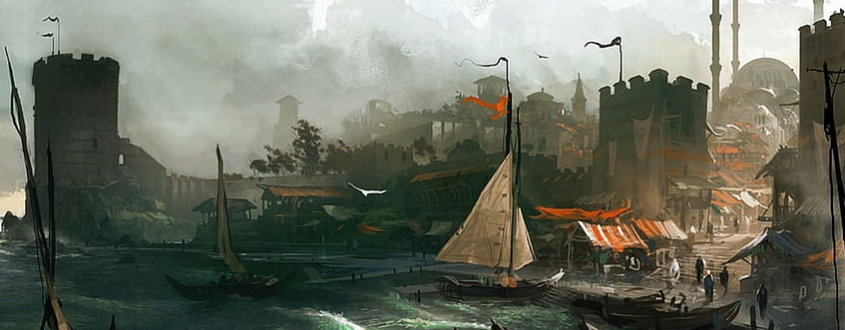



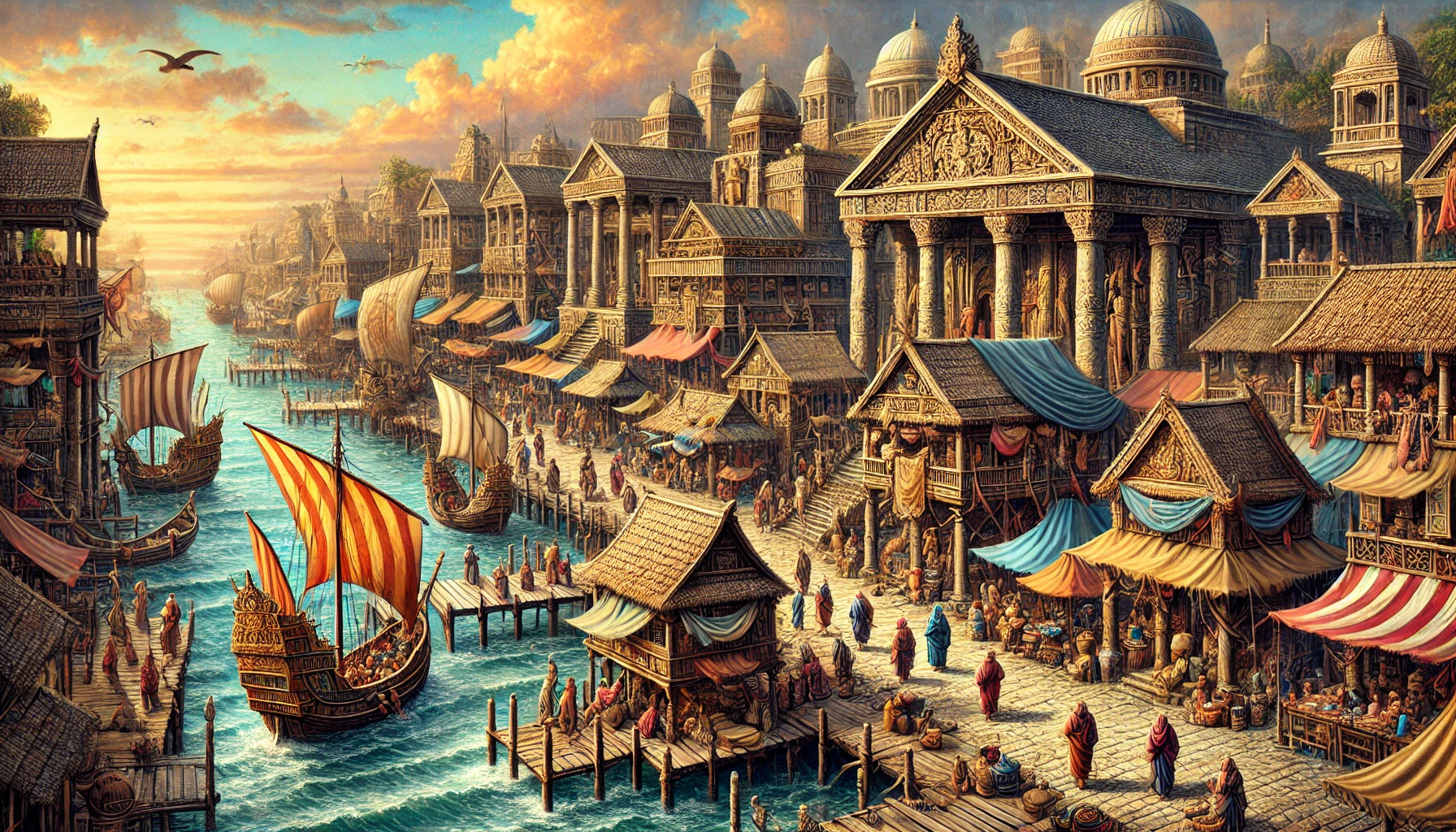


















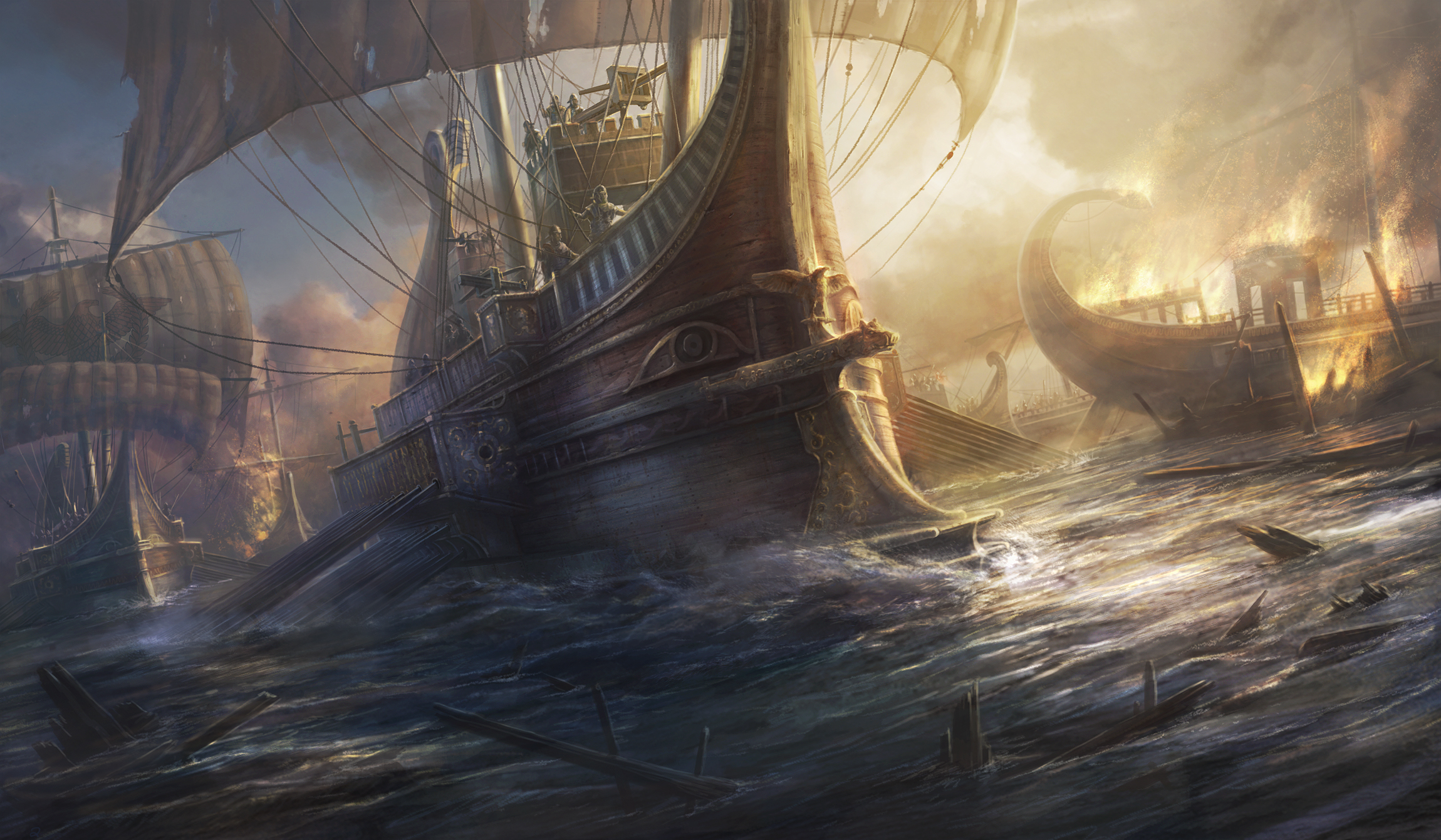

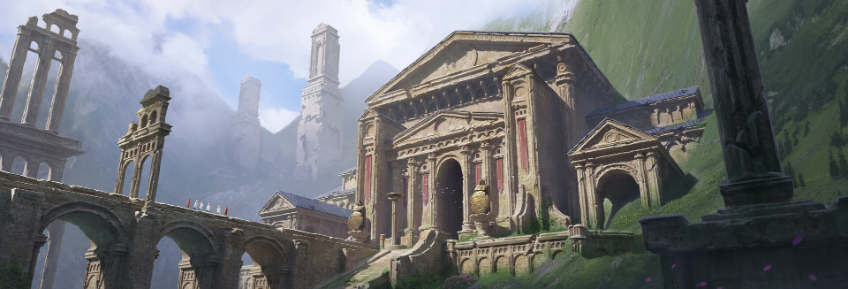





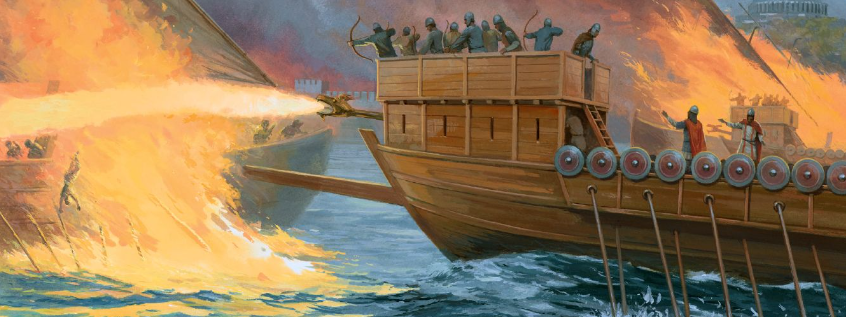



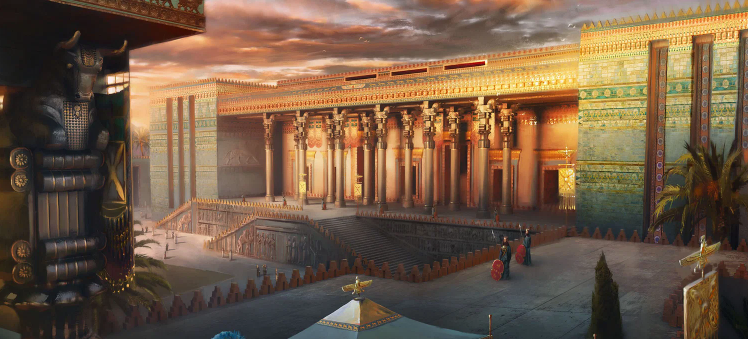











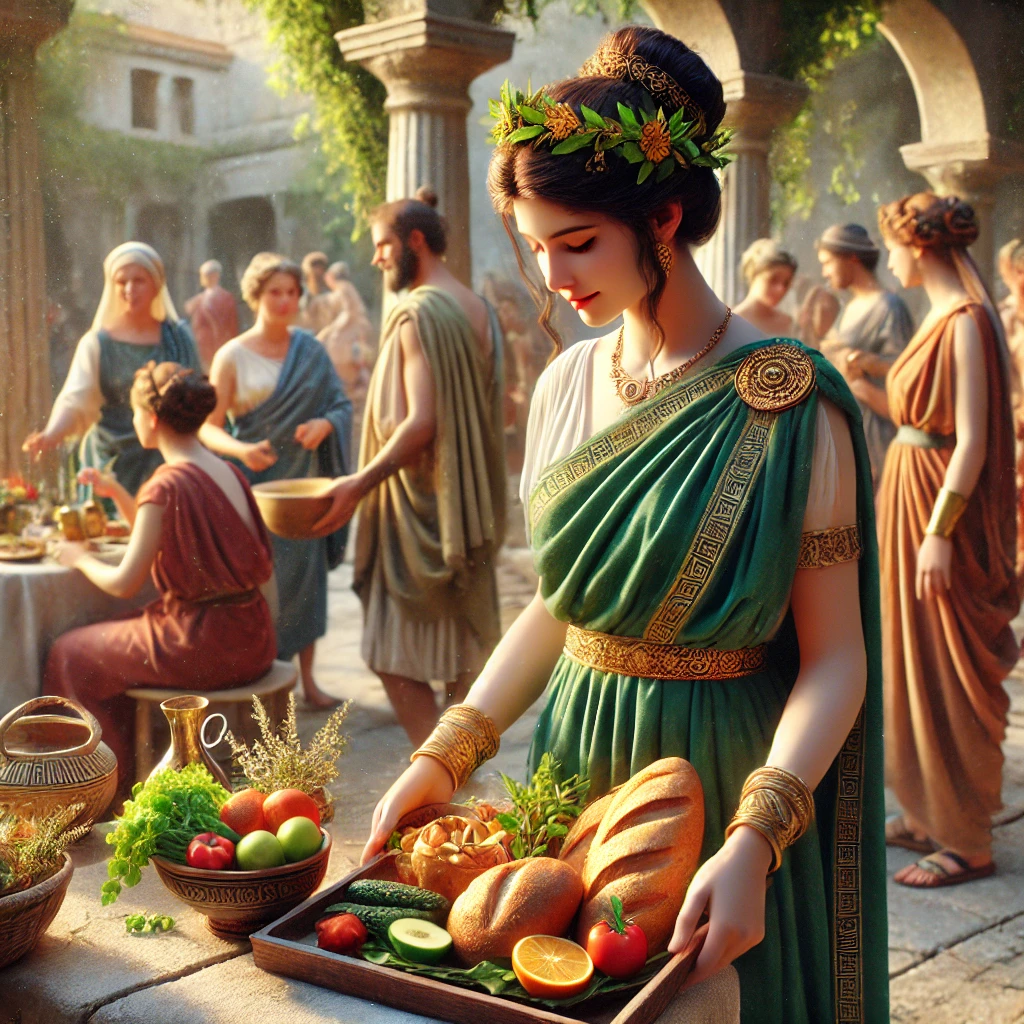

















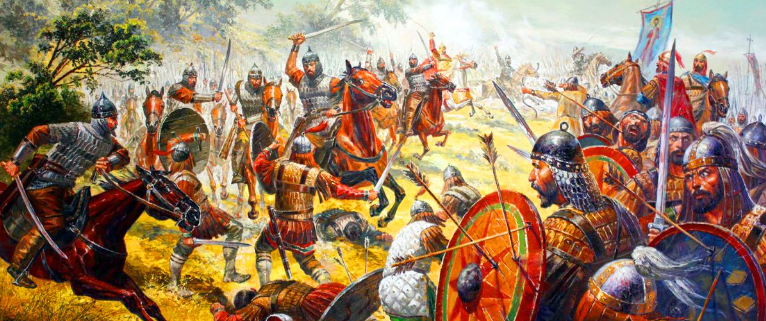



























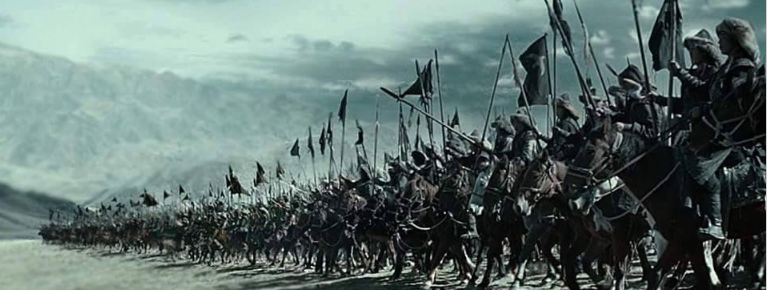

Comments